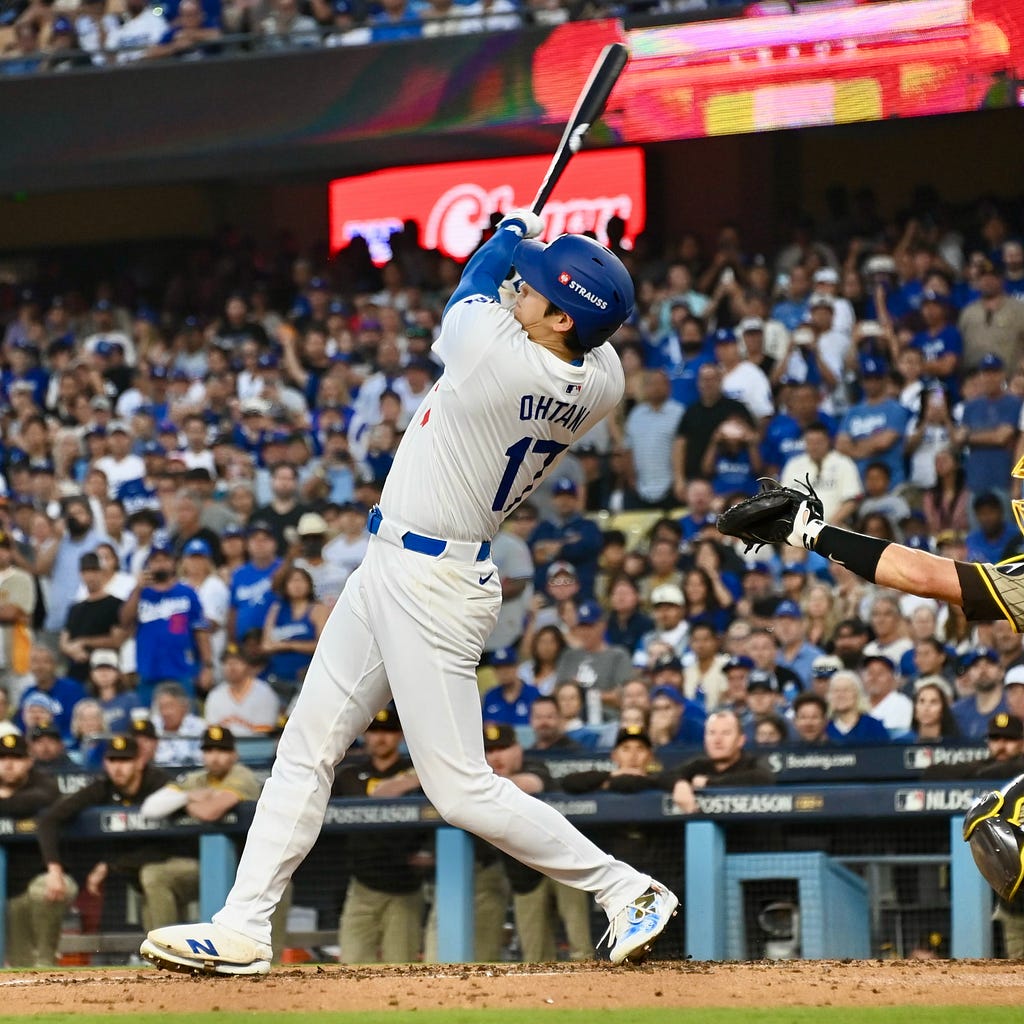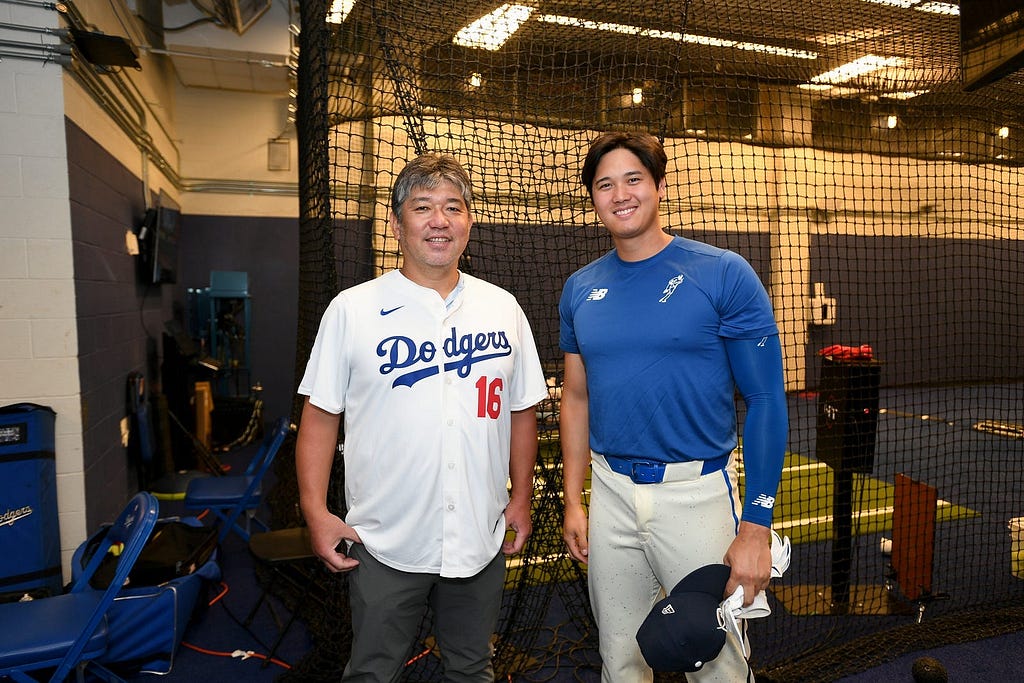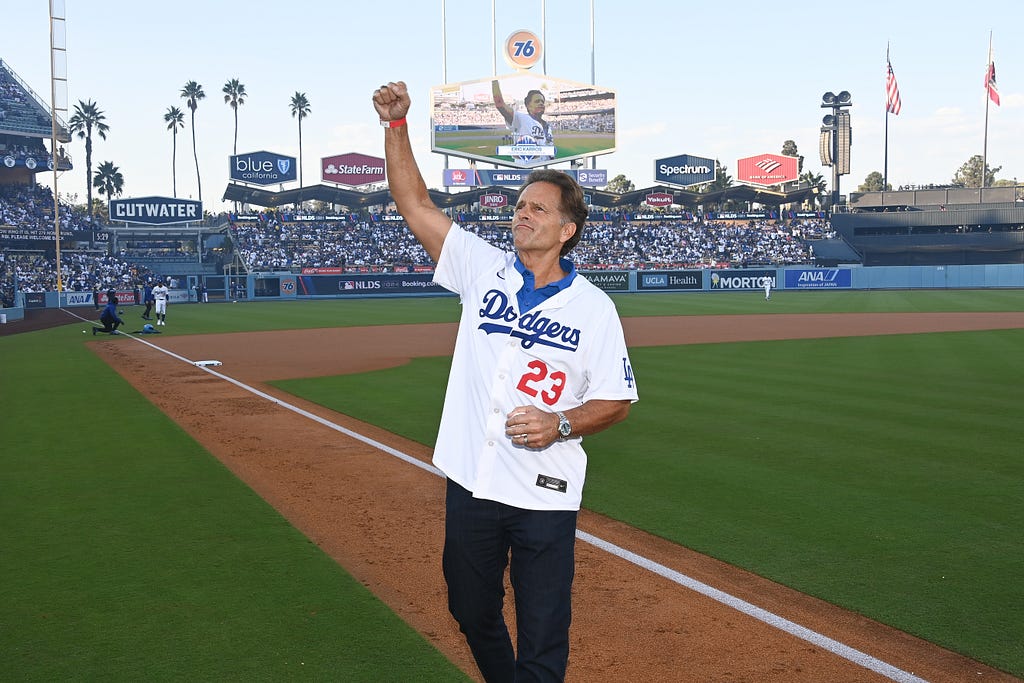
by Mark Langill
Former first baseman and current broadcaster Eric Karros may be the Dodgers’ all-time Los Angeles home run leader, but he doesn’t feel like a king when watching Shohei Ohtani.
Having just thrown out the ceremonial first pitch prior to the Dodgers 7–5 victory in Game 1 of the National League Division Series, Karros predicted success for Ohtani in the first postseason opportunity of his career after spending his first six seasons with the American League Angels.
“He’s the best player to ever put on a uniform,” says Karros, who hit 270 home runs during his Dodger career from 1991 to 2002. “We’re all fortunate to watch him. There’s nothing he does any more than amazes me. That doesn’t mean I’m not in awe of what he does.”
Ohtani set the Dodger franchise’s single-season record with 54 home runs, a pace that would tie Karros’ career mark by the end of the 2028 campaign.
For Karros, watching Ohtani’s superstardom as the Major League’s first player to reach at least 50 home runs and 50 stolen bases, along with expectations that he will return to the pitcher’s mound in 2025, brings a unique appreciation.
Karros won NL Rookie of the Year honors in 1992, the first of five consecutive Dodgers to win the award. Among the other winners was right-hander Hideo Nomo, a rookie in 1995 who opened the door for future Japanese players in the Major Leagues.

Before Nomo, the only Japanese player to appear in the Majors was left-hander Masanori Murakami with the 1964–65 San Francisco Giants. Murakami originally was supposed to pitch for San Francisco’s Single-A Fresno affiliate for experience in 1964, but a September promotion to the Majors led to a dispute between the Giants and Kankai Hawks, Murakami’s Japanese Pacific League team. An agreement was reached that Murakami would pitch for San Francisco in 1965 and return to Japan in 1966.
Karros participated in the Dodgers’ 1993 exhibition tour of Japan after the regular season. It was a time nobody could’ve predicted that Nomo would find a loophole in his contract — retiring from the Kintetsu Buffaloes — and attempt to pitch in the United States. The Dodgers didn’t even have scouting reports on Japanese players when Nomo suddenly hit the open market as a free agent.
Although Nomo and Ohtani both signed with the Dodgers as free agents, there was a major difference. Ohtani was already known in Southern California. Nomo wasn’t known in Los Angeles. And not everyone in Japan rooted for his success because he was going against the country’s baseball establishment with the help of his agent, Don Nomura.
“Nomo was the pioneer, everything rode on his shoulders when he came over here,” Karros said. “I can’t imagine all the pressure he went through, playing in Los Angeles but also representing the country of Japan.”

The Dodgers made the playoffs in Nomo’s first two seasons with the Dodgers in 1995 and 1996. But Los Angeles was swept in consecutive Division Series against Cincinnati and Atlanta. Nomo started a game in each series and went 0–2 with a 10.38 ERA in 8 2/3 innings.
Three decades later, Dodger Stadium was filled with Ohtani merchandise, the number 17 Dodgers jersey available with Ohtani’s name spelled out in English or Japanese.
Ohtani didn’t waste any time adding to his legend. His three-run home run in the second inning off San Diego starter Dylan Cease tied the score and kept the Dodgers in the game until they could complete the comeback against San Diego’s bullpen.
“I could really feel the intensity of the stadium before the game began,” Ohtani said. “And I thoroughly enjoyed it.”
The Dodgers previously were 0–15 in postseason games when trailing by three or more runs in the first inning. Manny Machado hit a two-run homer off starter Yoshinobu Yamamoto, who allowed five runs in three innings.
It was also the first time in 68 years the Dodgers won a postseason game in which the starting pitcher allowed five runs. In Game 2 of the 1956 World Series, Don Newcombe allowed six earned runs in 1 2/3 innings against the New York Yankees, but Brooklyn rallied for a 13–8 victory at Ebbets Field.
Those 1956 Dodgers eventually lost the World Series in seven games, but their season wasn’t over. They boarded an airplane and flew from New York to Hawaii for refueling to begin their first-ever goodwill exhibition tour of Japan.
NLDS: One home run hero admires another was originally published in Dodger Insider on Medium, where people are continuing the conversation by highlighting and responding to this story.
